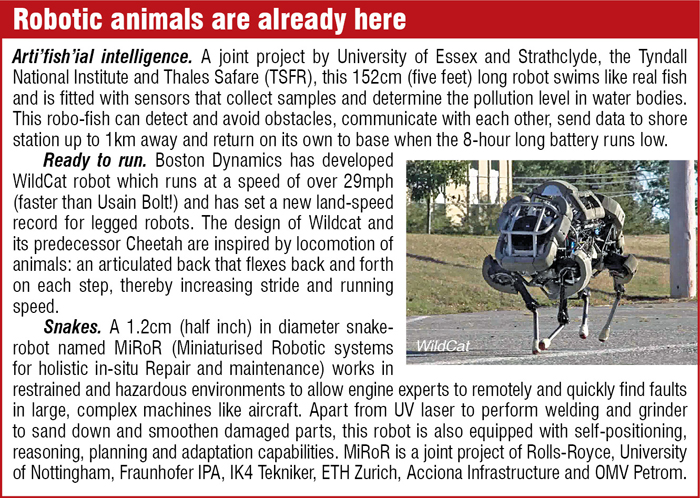US-based Droplet Robotics has introduced a data-analytics powered system that can identify the soil and plant types to precisely disperse required amount of water for an optimal growth of each plant. It also provides the user with analytics data like how much water goes to each type of plant, tree or lawn. They use cloud computing, connected services and machine-to-machine communication (M2M) to analyse situations and identify events. They also use the information to make intelligent decisions that are then implemented through robots that they control.
Remember Robovacs? These are those intelligent and autonomous cleaning systems of yesteryear that have the capability to analyse their surroundings and use the data to implement the most efficient cleaning process. Things have changed a lot since the introduction of these robots though.
The latest Robovacs like the Roomba 800 series from iRobot have advanced their robots’ ‘smartness factor’ by enabling them to make the most of a whole lot of sensors that come with the bot. The newer robots can detect cliffs and steps before they fall down, know how to follow walls rather than bouncing of them, and negotiate around items cluttering the floor. These can even escape if caught in a particularly difficult nook under a table.
The next generation of housekeeping robots promise to be a lot smarter. A robot designed to demonstrate cognitive systems that self-understand and self-extend (CogX) is one such example. This robot is equipped with probabilistic reasoning and planning capability to exploit facts or pieces of knowledge that it detects. For instance, if you ask this robot to find a pack of cornflakes, it will exploit the knowledge that there is a greater probability that someone has left it in the kitchen and start its search from there.
Technology like this can make robots far more intelligent than they are now, and more efficient in cases like the one mentioned above.
Step two: understanding emotions
We finally have the technology to ensure that even if your spouse doesn’t understand your feelings, you can count on your robot. Computer Expression Recognition Toolbox (CERT) is a complete system for fully automated facial expression recognition. The CERT system helps detect spontaneous facial expressions, including automated discrimination of posed vs genuine expressions of pain, automated detection of driver drowsiness, adaptive tutoring systems and intervention for children with autism.

CERT also has its successor technology in the market, called FACET Vision by Emotient. Emotient API provides the ability to analyse emotional response of users, detecting everything from joy, surprise and anger to complex ones like frustration and confusion. It can even identify blends of two or more emotions. It does this by using Emotient API Facial Action Units (AUs). These action units are essentially elementary facial muscle movements that are detected and monitored by the robot or application to identify what kind of expression is being shown by the human being. Emotient AUs are factors used to detect over 28 human actions, from raising an eyebrow to a jaw drop. Emotient recently raised over six million US dollars for its facial recognition technology.






